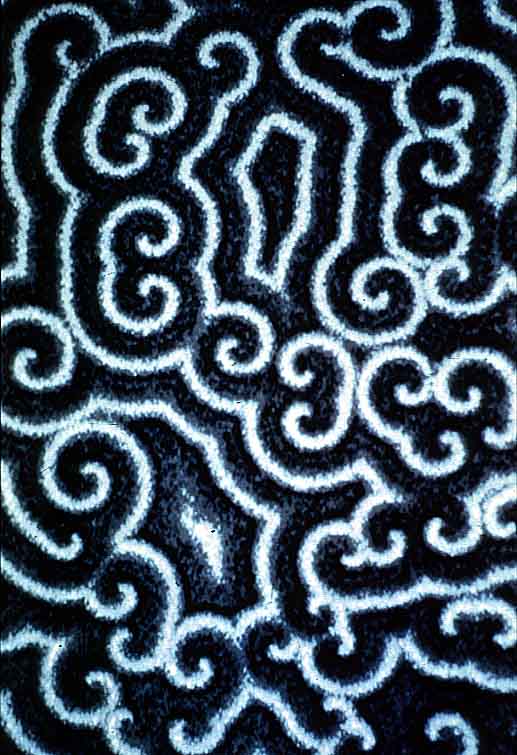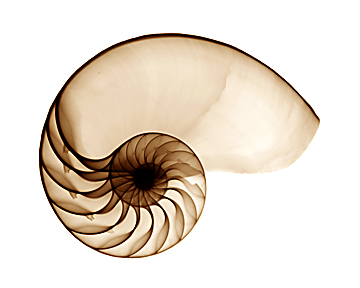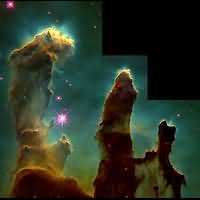Summary, Reflections, and Further Considerations
"The World of Langton's Ant" was conceived with several different objectives in mind. At the most basic level, it was intended to provide a model of science education following the goals defined in "Revisiting Science in Culture: Science as Story Telling and Story Revising". At a slightly more ambitious level, the aim was to provide a useful introduction to core ideas in the developing interdisciplinary field of "emergence" or "complex systems". Most ambitiously, the intent was to see to what degree a careful working through of an elementary phenomenon of the sort needed for effective teaching would help to generate ideas and frameworks that might usefully advance current understanding even for those professionally involved in particular fields of inquiry.
Science Education
It may seem slightly odd to use a computer model rather than a "natural" phenomenon as the core of a lesson in science. What this reflects is a perhaps non-standard perspective on what a "computer model" is and should be used for. While many people think of computer models as ways to try and mimic and hence make sense of "natural" phenomena, my own sense is that computer models, like natural phenomena, are organized sytems exhibiting particular behaviors whose underlying mechanisms and origins one may wonder about. From this perspective, one can inquire into computer models in exactly the same way one inquires into other phenomena. And they have certain advantages in that, for example, one can be sure there are not unknown factors involved. While experiences with models do not perfectly mimic experience with, for example, chemical substances or living organisms, experiences with one or the other of the latter are also not equivilent. The effort here is to get at some important common features of scientific inquiry, not the specifics of scientific inquiry into particular kinds of things. It is also relevant that computer models, as products of the human brain, are in fact in an important sense "natural" systems and so perfectly good subjects of inquiry, so long as it is understood they are not intended as virtual representations of some other "reality". Along these lines, it is relevant that "The World of Langton's Ant" does not start with any indication that it is a computer model; it is introduced simply as an interesting phenomenon. That it is a computer model becomes clear only as a part of one's inquiry into the phenomenon.
The general elements of science education that "The World" tries to illustrate are
- Start with an interesting/puzzling phenomenon, ie one that connects to peoples' interests both in its own right and in terms of some more general question. The phenomenon needs to be as well one that can be manipulated in various interesting and instructive ways, and that leads on to further questions of progressive sophistication and open-endedness.
- Encourage study of the phenomenon in its own right, ie at the level of scale at which the phenomenon exists. Help to recognize patterns visible at this level and use them to motivate questions about what must exist at lower levels of complexity. Allow for possible tangential explorations
- Provide ways to explore the phenomenon in terms of interactions of simpler components, ie at "reductionist" levels. Allow for possible tangential explorations. (Though not illustrated, it would probably make sense to provide ways as well to explore the phenomenon in its interactions with other phenomena at higher levels of organization).
- Return observations and inquiries to the more general question they are intended to help understand. There is no requirement to "answer" the general question but only to be sure that it has been usefully illumimated (as in coming to understand that a commonly used term actually represents something more subtle than is usually appreciated).
- Be sure there is a general story that can be appreciated/arrived at by most/all people and enough play to allow for individual offshoots.
Emergent Systems: Core Ideas
- Quite sophisticated behavior can result from simple interactions of simple things.
- One can often usefully and relatively rigorously distinguish two general classes of emergent systems
- deterministic
- non-deterministic
- One can often usefully and relatively rigorously distinguish four aspects of emergent systems
- Agents
- Environments
- Observers/participants
- Creator/architect/designer
- Changes in behavior can occur with no change within an agent, resulting instead from changes in the environment.
- Changes in the environment can be produced by an agent as well as by an observer
- A bidirectional relationship between an unchanging agent and an environment modifiable by the agent can produce behaviors that an observer may see as "purposive" even in a deterministic system.
- Behaviors that appear "purposive" to an observer do not depend on any representation of the "purpose" within the agent.
- Systems that exhibit "purposive" behavior need not depend on any conception of that "purpose" in the mind of a creator/architect/designer
- Signs of "purpose", and even systems that exhibit what an observer would characterize as "purposive" behavior can come into existence simply because of indeterminate processes, ie need not involve minds at all.
Emergent Systems: Moving On?
- How generally useful is the deterministic/non-deterministic distinction (2 in list above)? Can it be made generally rather than in the case specific way done here?
- How generally useful is the agents/environment/observer/creator distinction (3 in list above)? What are its limitations? Where does it break down? Where is it irrelevant?
- How generally useful is the invariant/variant distinction (item 4 in list above)?
- One might imagine a classification scheme for at least some emergent systems based on items 1-3 above. Do their exist emergent systems of all sixteen possible kinds? Is their any interesting variation in any capability of emergent systems that correlates with membership in one or another of these categories?
- Is the recognition that bidirectional causual relations exist successively at the levels of agent/environment and world/observer more generally significant? Can it be usefully extended to creator/combination of world/observer?
- Would it make a qualitative difference if the bidirectional relationship affected not only agent behavior but also agent state?
- Is the notion of some degree of "purposiveness" arising from bidirectional causal relationships more generally significant?
- Is the notion of observer as adding "meaning" in a way that can vary more generally significant?
- Is there a way to replace "interesting" as a creator criterion with a "non-purposive" selection mechanism?
- Is there a way to create a world/observer relation that obviates the need for any continuing monitoring and adjustment by the creator?
Paul Grobstein with the Summer 2005 Serendip/SciSoc group. Applets created with
NetLogo by Rebekah Baglini, building on earlier work
by Panama Geer.
| On-Line Forum
| Complex Systems | Serendip Home |
Send us your comments at Serendip

© by Serendip 1994-
- Last Modified:
Wednesday, 02-May-2018 10:51:07 CDT







